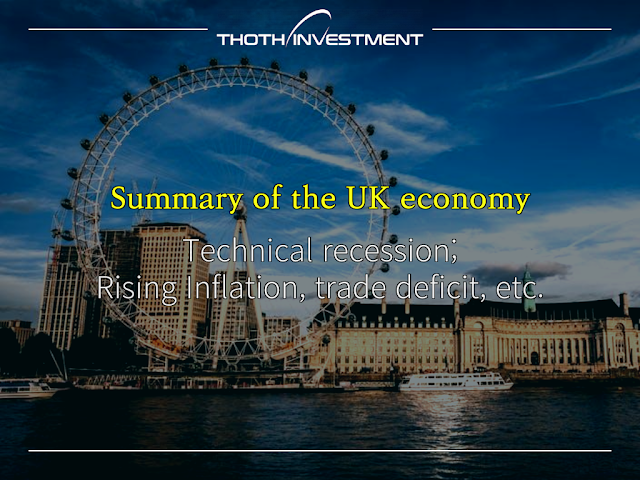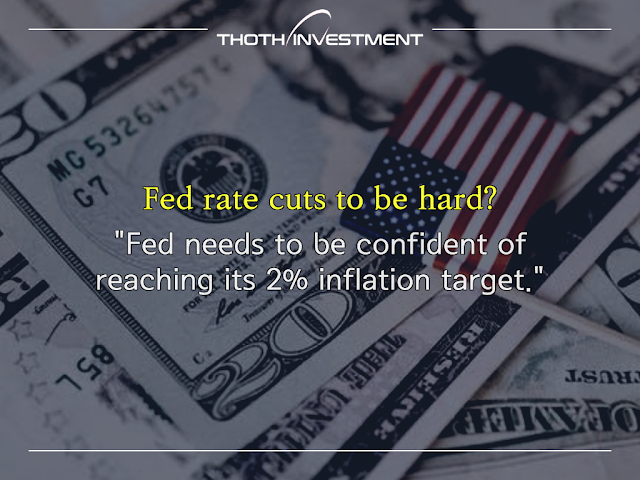Summary of the UK Economy(Mar-2024) : Technical Recession

Summary of the UK Economy(Mar-2024) Technical Recession; 2 consecutive quarters of recession Rising Inflation Trade deficit United Kingdom, the Bank of England's base rate is 5.25% (2024-03-21) and has been frozen five times. Summary of the UK Economy GDP Projections; Bank of England The Bank of England's forecast for UK economic growth is shown above. 2022 (actual) : 4.3% 2023 (forecast) : 0.3% 2024(forecast) : 0.3% 2025 (forecast) : 0.8% We assume the 2023 forecast is nearly realistic, and we also forecast low growth of 0.3% in 2024. Quarterly economic growth rates for 2023 are shown below. 1Q 2023 : 0.2% 2Q 2023 : 0% 3Q 2023 : -0.1% 4Q 2023 : -0.3% With three and four consecutive quarters of negative growth in 2023, we are characterizing this as a technical recession. CPI Projections; Bank of England Looking at the inflation outlook, we expect inflation to stabilize after reaching +4.2% in Q4 2023. In January 2024, the Consumer Price Index (CPI) stood at 4.0%, down -0.6% mon...


